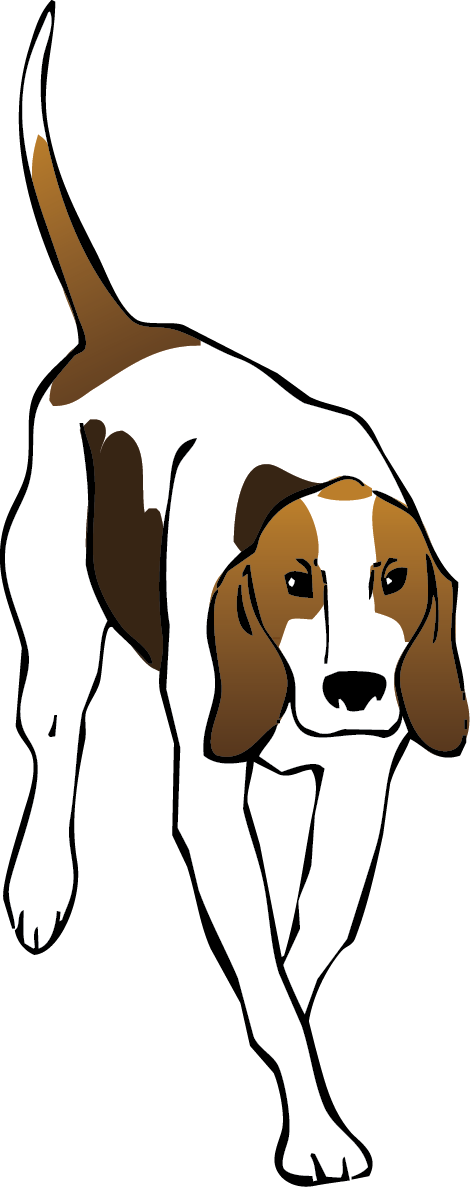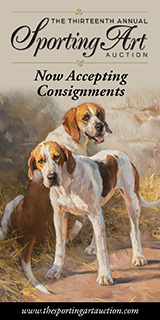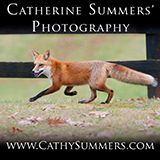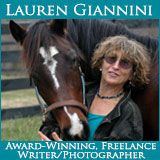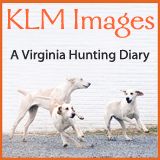horse
Cleveland Bay Day in Maryland to Hack, School, Visit
Cleveland Bays and their owners will have a day together to trail ride, school over fences cross country or in a large sand ring, or on the flat in a dressage arena, or just hang out and chat with other Cleveland bay enthusiasts. The event will be held Sunday, July 19, 2015 at Woodstock Equestrian Park, Route 28, Poolesville, Maryland, starting at 9:00 am with lunch at about noon. Arrive when you can, and stay as long as you like. The event is free, but you are asked to bring a dish and your own beverage for the potluck lunch. There is a water complex, some small ditches, and a selection of varied cross-country jumps with the majority at beginner novice or novice level. If you plan to school cross country, please bring a protective vest. The wooded trails are even suitable for carriages. Non-Cleveland Bay horses and friends are welcome as well. Woodstock Equestrian Park is just slightly beyond the intersection of Route 28 and Route 109, heading toward Dickerson. Ample trailer parking is available. For more information or to RSVP, contact Marcia Brody ([email protected]). Posted July 13, 2015
Read More
Rupert Isaacson and Horse Boy
Rupert Isaacson discovered that horses were therapeutically beneficial to his autistic son Rowan. Their lives grew from that starting point.
When we talk about Rupert Isaacson and "Horse Boy," we could be talking about him and his autistic son Rowan, his internationally best-selling book, his award-winning documentary film, and/or his world-wide organization that helps autism families.
Rupert was an avid foxhunter until other imperatives occupied his life. He is also a gifted and persuasive writer. But Rupert’s principal gift to humanity is a mind set that allows no limits on what is possible. No cause, no matter the odds, is hopeless to Isaacson, and time and again he has tilted at windmills and accomplished astonishing results.
Rupert was born in England and roamed the world as a travel and environmental writer, specializing in Africa. It was there that he came upon a cause that captured him totally—the displacement and removal of the Bushmen of the Kalahari from their traditional hunting grounds by their own government. Isaacson became a vigorous activist for the Bushmen, gave speeches, wrote a book about their plight, and arranged for the Bushmen to appear before the United Nations to plead their case. They won.
At about that time, Isaacson and his wife, then living in Texas, discovered that their infant son Rowan was autistic. Conventional treatment protocols—and they tried many—were unable to improve the boy’s most troubling behavioral problems, and Isaacson immersed himself into finding alternate solutions. He discovered that horseback riding while holding his son in front of him in the saddle was therapeutic for the boy. But only temporarily.
Scientists Claim Thoroughbreds Are Running Faster
For the past thirty years, conventional wisdom has held that horses have attained their maximum speed. Now, researchers at the University of Exeter in England claim that racehorses are running faster. Looking at data from more than 616,000 races run by more than 70,000 horses, these scientists have found the winning speeds greatly improved, particularly over the shorter distances. The big question, according to a professor at Exeter is whether the improvement is a result of breeding or technical changes. In the early 1900s, the speed of horses improved when jockeys shortened their stirrups and got out of the saddle. Speed improved again in the 1970s and 1980s when jockeys shortened their stirrups still further. How now to evaluate the effects of improved vet care, better draining of track surfaces, and hi-tech track surfaces that absorb energy from the horse’s footfalls and return a portion of that energy back to the horse in springiness? Click for more details in the complete article. Posted June 26, 2015
Read More
Rupert Isaacson’s Horse boy
Rupert Isaacson is a horseman. He was an avid foxhunter until other life matters intruded. He is a gifted writer as well. But Rupert’s principal gift to humanity is a mind set that is constitutionally unable to accept limits on what is possible. No challenge, no matter the odds, is hopeless to Isaacson. Time and again he has tilted at the windmills of conventional wisdom and accomplished astonishing results.
Rupert was born in England and roamed the world as a travel and environmental writer, specializing in Africa. It was there that he came upon a cause that captured him totally—the displacement and removal of the Bushmen of the Kalahari from their traditional hunting grounds by their own government. He became a vigorous activist for the Bushmen, gave speeches, wrote a book about their plight, and arranged for the Bushmen to appear before the United Nations to plead their case. They won.
At about that time, Rupert and his wife, then living in Texas, discovered that their infant son Rowan was autistic. Conventional treatment protocols—and they tried many—were unable to improve the boy’s most troubling behavioral problems, and Rupert immersed himself into finding alternate solutions. He discovered that horseback riding while holding his son in front of him in the saddle was therapeutic for the boy. But only temporarily.
Vaccinate Horses Now, Recommends VDACS
Mosquito season will begin soon in Virginia and has already begun in some areas. That means it’s time to start thinking about vaccinating your horses against mosquito-borne illnesses such as West Nile Virus (WNV) and Eastern Equine Encephalitis (EEE). Rabies is not a mosquito-borne disease, but it’s a fatal disease that also requires an annual vaccination. The Virginia Department of Agriculture and Consumer Services (VDACS) urges all horse owners to check with their veterinarians for vaccination recommendations for their animals. Virginia only had one confirmed case of WNV (Augusta County) and one of EEE (Suffolk) in 2014, although many other states had a much higher incidence of cases. “Timely vaccination has been shown to decrease WNV and EEE disease incidence drastically,” said Dr. Richard Wilkes, State Veterinarian at VDACS. “Without vaccination, we would expect to see many more infected horses, so we still urge horse owners to consider EEE and WNV vaccination. We believe that in most cases, private veterinarians will recommend them for their clients.” Vaccines are effective for six to twelve months, so horses should be re-vaccinated at least annually. In areas where the disease occurs frequently, most veterinarians recommend vaccination every six months. For the vaccine to be effective it must be handled and administered properly and be given at least two weeks before the horse is exposed to the virus. Also, to stimulate full immunity, horses must be vaccinated twice, about thirty days apart, the first year they are vaccinated. Other prevention methods include destroying standing water breeding sites for mosquitoes, using insect repellents and removing animals from mosquito-infested areas during peak biting times, usually dusk to dawn. Dr. Wilkes also suggests that owners check about rabies vaccinations for their horses. There were no cases of rabies in Virginia horses last year but four each in 2012 and 2013. Rabies vaccines are also very effective and vaccinating horses annually can prevent rabies in both horses and humans. In addition to taking measures to decrease the likelihood that horses will be exposed to rabies, routine rabies vaccination is a very important aspect of disease prevention. All three of these diseases–EEE, WNV and rabies–cause neurologic signs in horses, such as staggering, circling, depression, loss of appetite and sometimes fever and blindness. The diseases can kill anywhere from 30 percent (WNV) to 90 percent (EEE) to 100 percent (rabies) of the horses infected. There is no proven cure for these diseases, but veterinarians can provide supportive therapy to treat symptoms of EEE and WNV and keep horses from injuring themselves. Rabies is always fatal. Humans can become infected with rabies by handling a rabid horse but cannot become infected with EEE or WNV by handling an infected horse, nor can a horse acquire the virus from another infected horse. The presence of an infected horse in the area indicates that mosquitoes carrying EEE or WNV are present, however, and those insects pose a threat to both humans and horses. For more information on WNV or EEE, contact the Office of Veterinary Services, Division of Animal Industry Services, VDACS, at 804.786.2483 or see vdacs.virginia.gov/animals/diseases.shtml. Information about rabies and rabies exposures can be found on the Virginia Department of Health’s Rabies Control page at vdh.virginia.gov/Epidemiology/DEE/Rabies/. Horse owners should contact their veterinarians for further advice on prevention, diagnosis and treatment. Posted May 12, 2015... This content is for subscribers only.Join NowAlready a member? Log in here
Read More
Maryland Hunt Cup 2015: One for the Books
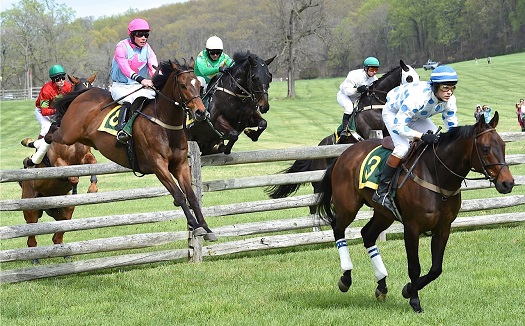 Fence 3: (l-r) Imperial Way (Bethany Baumgardner up) about to jump; Raven’s Choice (Mark Beecher up) 1st; Almarmooq (James Slater up); Guts For Garters (Jody Petty up) 2nd; Twill Do (James Stierhoff up) / Douglas Lees photo
Fence 3: (l-r) Imperial Way (Bethany Baumgardner up) about to jump; Raven’s Choice (Mark Beecher up) 1st; Almarmooq (James Slater up); Guts For Garters (Jody Petty up) 2nd; Twill Do (James Stierhoff up) / Douglas Lees photo
Ten minutes after crossing the wire first, a half length in front of Raven’s Choice, Imperial Way was disqualified. His jockey Bethany Baumgardner failed to weigh out with all the weight she carried into the race. Somewhere, during the course of the race, a twenty-pound weight slipped out of her saddle pad—a first in the 119 runnings of the Maryland Hunt Cup.
It was a double disappointment for Imperial Way, who was beat by just a nose in last year’s race by Stewart Strawbridge’s Guts for Garters. The odds-on favorite this year, Guts for Garters was trying for his second consecutive win, but placed second to Raven's Choice by six lengths after the disqualification.
The Making of a Book…Starting From the Ending
Jane Pohl and Fitzrada, painted by Paul BrownIn 2001 the Museum of Hounds and Hunting in Leesburg, Virginia, mounted an exhibit of the works of artist Paul Brown, famed for his elegant rendering of horsemen, horsewomen, and horses—racing, showing, and foxhunting. I was, at the time, a member of the Museum Advisory Board, and on the night of the exhibit I watched with curiosity and interest a slim, elderly, and proudly composed woman being carried in her wheelchair up the narrow back steps inside the Westmoreland Davis mansion to the second floor where the exhibit was hung.
I didn’t know whom she was, nor did I even meet her. Two months later she was dead, and I was equally unaware of even that occurrence. Her name, I was to learn some years later, was Jane Pohl, and, though she was terminally ill the night I saw her, she was determined to attend the exhibit, her last outing, because she had lent some of the Paul Brown art depicting her and her horse Fitzrada for the exhibit. I couldn’t know at the time that I was witnessing the ending of a story with which I was to become more than familiar.
Horsey Sweet Briar College Sued Over Closure
For 114 years Sweet Briar College has represented a storybook version of the college experience for women, especially women who love horses. In 2015, Sweet Briar was recognized by U.S. News & World Report as the 116th “Best Liberal Arts College” in the nation. Lying in the foothills of the Blue Ridge Mountains near Lynchburg, Virginia, and housed in Colonial Revival-style red brick white-columned buildings on a lush, green campus, the institution was famed for its equestrian programs, including foxhunting, showing, and equitation. Its competitive teams have amassed an unsurpassed record of national championships in every discipline. But students, faculty, and alumnae were shocked just last month by the surprise announcement by the president and the Board of Directors that the college would be closed forever this summer for financial reasons. On Monday, March 30, 2015, a lawsuit was filed on behalf of the Commonwealth of Virginia to prevent the closure. The suit charges that closure would violate the terms of the will under which the school was founded, and also charges misuse of charitable funds. According to the Washington Post, county attorney Ellen Bowyer claims that college officials appear to be preparing to sell assets, destroy documents and “obliterate contractual relationships governing tenancies and endowments.” An alumnae group, Saving Sweet Briar, has been formed and has already raised three million dollars to fight the closure, all the while representatives from an array of other colleges have set up booths in the school gym to persuade students to their institutions. A New York Times article quotes Tracy Stuart, a real estate agent in Martha’s Vineyard who graduated in 1993 and helped found the Saving Sweet Briar group. “Something doesn’t smell right,” Stuart reportedly said. “You just don’t close a college like that without warning.” Click for the complete articles in the Washington Post and the New York Times. Posted April 1, 2015
Read More
Sporting Photographer Janet Hitchen
Douglas Lees photoPopular and widely-respected photographer Janet Hitchen (neé Goldberg) died at her home near Millwood, Virginia on Tuesday evening, March 24, 2015. She was seventy-one.
Brilliant at her art, she has, over the last few decades, recorded a magnificent visual historical record of people and events in the world of field sport in and around Virginia. I fervently hope that her collection of negatives and digital image files will be preserved in her name, in the custody of a capable and responsible archivist, for the benefit of sporting researchers and writers of the future.
Janet was my go-to photographer from the early 1990s on, whenever I needed an image for Covertside. When I published the first full-color foxhunting calendar for the American Foxhound Club in 1998, she was the first photographer I called. Two of her photos were included in that inaugural calendar, and her photos have graced the pages and covers of Covertside and our Foxhunting Life Calendars ever since.
Trainer Teddy Mulligan Returns, Wins at Blue Ridge
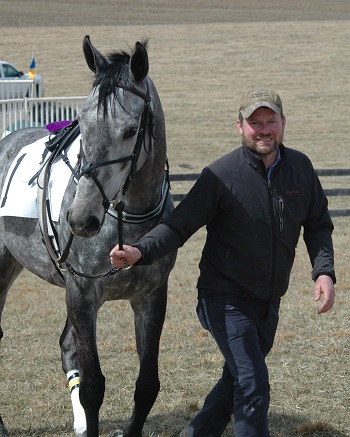 Trainer Teddy Mulligan marked his return to the racecourse with a win in the first race. / Nancy Kleck photoThe sixty-sixth running of the Blue Ridge Hunt Point-to-Point Races were held at Woodley Farm on Sunday, March 22, 2015. This was the second year in a row that the Blue Ridge race meet had to be postponed due to the weather.
Trainer Teddy Mulligan marked his return to the racecourse with a win in the first race. / Nancy Kleck photoThe sixty-sixth running of the Blue Ridge Hunt Point-to-Point Races were held at Woodley Farm on Sunday, March 22, 2015. This was the second year in a row that the Blue Ridge race meet had to be postponed due to the weather.
Trainer Teddy Mulligan returned to the racecourse after a year’s absence, saddling his first horse for the first race since his leave-taking and scoring his first win. Bedizen and Zol Zayne, the one-two horses, pulled away from the field of four in the Maiden Hurdle Race with less than a quarter mile to run. Turning for home, Bedizen with Jeff Murphy up took the lead and drew away for a convincing win.
In the remaining two hurdle races—Amateur/Novice Rider and Open Races—trainer Jimmy Day and his rider Brendan Brooks dominated the Winner’s Circle with Controlled Neglect, owned by Ann Braxton Jones-Lynch, and Manacor, owned by a Daybreak Stables syndicate.
